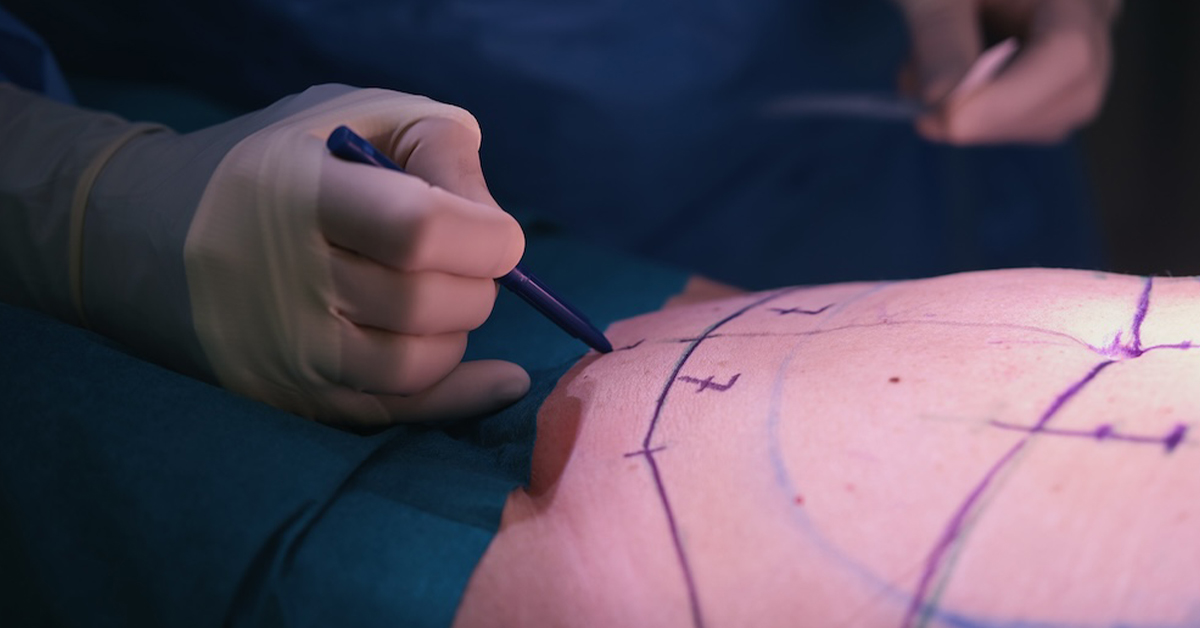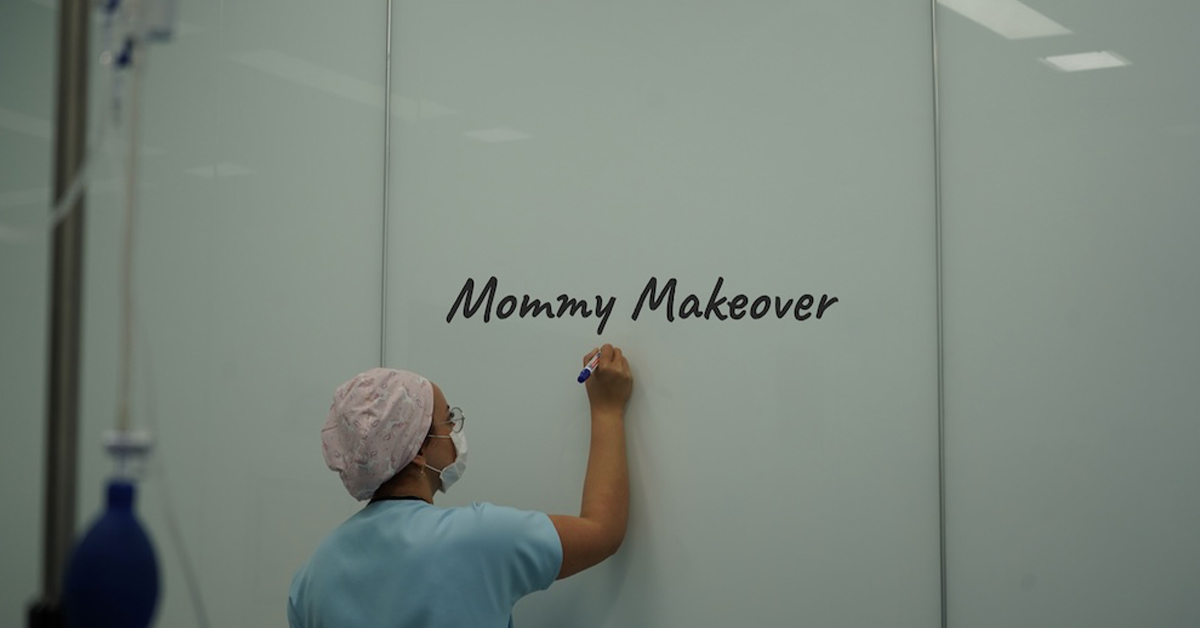Understanding Seroma After Breast Augmentation: Causes & Treatment
Seromas are the most common complication of breast surgery, including breast augmentation. They occur when serous fluid, lymphatic fluid, or a mix of both builds up under the skin in the spaces where tissue has been removed. This can happen after various types of breast surgery, such as lumpectomy, mastectomy, lymph node removal, and breast reconstruction.
The exact cause of seroma formation is still unclear, but factors such as the size of the surgical area, surgical techniques, removal of axillary lymph nodes, and longer surgeries can contribute to their development. Risk factors for seroma formation include the early removal of drain tubes, use of low-vacuum drains, the use of electrocautery, and early or excessive shoulder movement following surgery.
If a seroma develops, it may cause tight skin, discomfort or pain, restriction of shoulder motion, and red, hot skin. Small seromas often resolve on their own, but larger or persistent seromas may require treatment, such as aspiration to remove the fluid or sclerotherapy to promote healing by closing up the empty space.
Preventive measures include the use of suction drains, temporary immobilization, compression garments, and steroids. Potential complications of seromas include swelling, infection, abscess formation, calcification, and the need for surgical removal.
Symptoms of Seroma After Breast Augmentation
After undergoing breast augmentation surgery, it’s essential to be aware of the potential symptoms of seroma formation. By recognizing these symptoms and promptly reporting them to your healthcare team, proper evaluation and management can be initiated.
Common symptoms of seroma after breast augmentation typically appear within a week to 10 days after the surgery or after the removal of surgical drains. However, the timing can vary. Some of the symptoms include:
- Tender and swollen skin
- A defined lump
- Redness
- Squishiness
Seromas can also cause discomfort and pain, restrict shoulder motion, and in some cases, lead to wound dehiscence or longer hospital stays. Therefore, it’s crucial to pay close attention to any changes in your breasts and promptly communicate them to your healthcare team.
The symptoms of seroma after breast augmentation may vary from person to person, and it’s essential to seek proper medical guidance for accurate diagnosis and appropriate treatment.
| Symptom | Description |
|---|---|
| Tender and swollen skin | The affected area may feel tender to the touch and appear visibly swollen. |
| Defined lump | You may notice a palpable lump or mass in the breast area. |
| Redness | The skin over the seroma site may appear reddened or have a warm sensation. |
| Squishiness | The area affected by the seroma may feel soft and squishy to the touch. |
Diagnosis of Seroma After Breast Augmentation
Diagnosing a seroma after breast augmentation typically involves a combination of physical examination findings and additional diagnostic tests. During a physical examination, the healthcare provider will assess the presence of a tender and swollen lump, which is a typical sign of a seroma. To confirm the diagnosis and differentiate it from other possible conditions, such as hematomas or abscesses, imaging techniques such as ultrasound and mammography may be used.
Ultrasound is often the preferred imaging modality for diagnosing seromas. It allows the healthcare provider to visualize the fluid pocket as a dark area, confirming the presence of a seroma. In cases where the seroma becomes calcified, it may be visible on a mammogram as well. These diagnostic tools help rule out other potential causes of breast lumps and ensure an accurate diagnosis.
If you suspect the presence of a seroma after breast augmentation, it is important to consult with your healthcare team. They will perform a physical examination and recommend appropriate diagnostic tests if necessary to confirm the diagnosis and guide further treatment decisions.
Treatment of Seroma After Breast Augmentation
When it comes to the treatment of seroma after breast augmentation, the approach taken depends on the size and persistence of the seroma. Small seromas that do not cause significant symptoms may resolve on their own over time. However, larger or persistent seromas may require intervention.
The primary method of treatment is aspiration, which involves using a hypodermic needle to drain the fluid from the seroma. This procedure can provide relief from pain and discomfort, but it may need to be repeated if the fluid reaccumulates. In cases of recurrent seromas, sclerotherapy may be utilized. This involves injecting an irritant into the empty space to promote the closure of the seroma cavity and prevent the reaccumulation of fluid.
Heat application, such as using a heating pad or warm compresses, can also aid in promoting fluid drainage and reducing pain. It’s important to keep the skin overlying the seroma clean and to report any signs of infection or worsening symptoms to the healthcare team.
Treatment options for seroma after breast augmentation
| Treatment Method | Description |
|---|---|
| Aspiration | Drainage of fluid from the seroma using a hypodermic needle. |
| Sclerotherapy | Injection of an irritant into the empty space to promote closure of the seroma cavity. |
| Heat Application | Use of a heating pad or warm compresses to aid in fluid drainage and reduce pain. |
By following the recommended treatment options and seeking medical attention when necessary, individuals can effectively manage seromas after breast augmentation and minimize the impact on their overall recovery process.
Prevention of Seroma After Breast Augmentation
Preventing seroma formation after breast augmentation involves several important measures. The use of suction drains during surgery is highly recommended to minimize the accumulation of fluid in the surgical site. These drains help in the early removal of excess fluid, reducing the risk of seroma development. Temporary immobilization of the affected area is also crucial to minimize movement and shear forces that can contribute to seroma formation. It is important to follow post-operative instructions carefully and avoid any vigorous activities or excessive shoulder movement that could disrupt the healing process.
Wearing compression garments, such as a firm-fitting bra or other garments recommended by your healthcare team, can provide support and help prevent fluid accumulation. Compression garments can help reduce the space available for fluid accumulation and promote proper healing of the surgical site. They can also improve blood circulation and reduce swelling, enhancing the recovery process. It is essential to wear compression garments as instructed by your healthcare team and to seek their guidance if you have any concerns or questions.
In some cases, the use of steroids may be considered to reduce the inflammatory response associated with surgery and lower the risk of seroma formation. Steroids can help minimize tissue swelling and inflammation, which can contribute to the development of seromas. It is important to discuss the potential benefits and risks of using steroids with your healthcare team to determine the most appropriate approach for your individual case. They can provide guidance on the optimal dosage and duration of steroid therapy, as well as monitor for any potential side effects.
During the pre-operative consultation, your healthcare team will thoroughly discuss the preventive measures specific to your unique situation. They will provide detailed instructions on the use of suction drains, immobilization techniques, and compression garments. By following these preventive measures and closely adhering to the guidance provided by your healthcare team, you can significantly reduce the risk of seroma formation after breast augmentation surgery.
| Preventive Measures | Benefits |
|---|---|
| Use of suction drains | Reduces fluid accumulation and early removal of excess fluid |
| Temporary immobilization | Minimizes movement and shear forces that contribute to seroma formation |
| Wearing compression garments | Provides support, reduces fluid accumulation, and promotes proper healing |
| Consideration of steroids | Reduces tissue swelling and inflammation associated with seroma formation |
Complications of Seroma After Breast Augmentation
Seromas after breast augmentation surgery can sometimes lead to complications that require medical attention. While most seromas are not associated with serious issues, it’s important to be aware of the potential complications that can arise. These include:
- Infection: Seromas can become infected, leading to localized or systemic infections. Signs of infection include redness, swelling, warmth, pain, and discharge from the surgical site. If you suspect an infection, it’s crucial to seek medical attention promptly.
- Swelling: Seromas can cause swelling, which may be accompanied by discomfort or pain. Swelling can affect the cosmetic appearance of the breasts and may require additional treatment to resolve.
- Abscess formation: In some cases, seromas can develop into abscesses. An abscess is a collection of pus within a cavity, and it typically presents as a swollen, tender, and fluctuant mass. Abscesses require drainage and may require antibiotics to treat the infection.
Monitoring for signs of infection, such as redness, swelling, and discharge, is crucial in managing seroma complications. Prompt medical attention should be sought if any complications are suspected. Your healthcare team will be able to evaluate and provide appropriate treatment for any complications that may arise.
| Complications | Symptoms | Treatment |
|---|---|---|
| Infection | Redness, swelling, warmth, pain, and discharge | Medical attention, antibiotics |
| Swelling | Enlargement, discomfort, pain | Additional treatment as necessary |
| Abscess formation | Swollen, tender, and fluctuant mass | Drainage, possible antibiotics |
While complications can occur, it’s important to remember that with proper monitoring and management, seromas can be effectively treated. By promptly seeking medical attention and following the advice of your healthcare team, you can minimize the impact of complications and ensure a smooth recovery after breast augmentation surgery.
Conclusion
Seromas after breast augmentation surgery are a common occurrence, but they can be effectively managed and treated. While small seromas often resolve on their own, larger or persistent seromas may require medical intervention. Aspiration, where the accumulated fluid is drained with a needle, is a primary treatment method. For recurrent seromas, sclerotherapy may be used to promote closure of the seroma cavity.
Prevention is key when it comes to seromas. Using suction drains during surgery and immobilizing the affected area can help minimize fluid accumulation. Wearing compression garments and considering the use of steroids can further reduce the risk. By discussing preventive measures with your healthcare team and promptly reporting any symptoms, you can minimize the impact of seroma on your recovery and overall well-being.
While complications such as infection, swelling, and abscess formation can arise, they can be managed with timely medical attention. With a clear understanding of the causes, symptoms, treatment, prevention, and potential complications of seroma after breast augmentation, you can confidently navigate your recovery journey and ensure a successful outcome.
Breast Augmentation in Miami, FL
To initiate your Breast Augmentation journey in Miami, it’s essential to schedule a consultation with our team. If you’re interested in learning more about the procedure, call us now at (305) 406-9055 or conveniently schedule a consultation online. Our experienced professionals will guide you through the process and address any concerns you may have.







